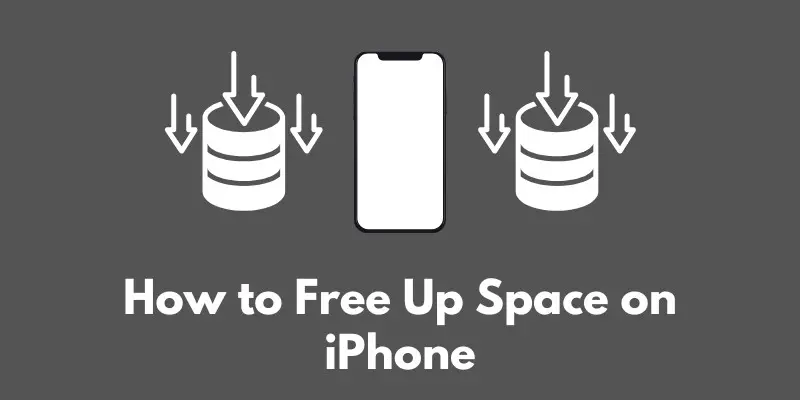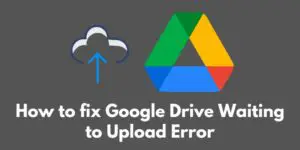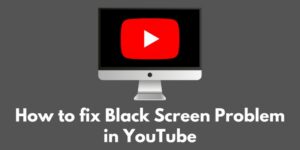Are you looking for ways to free up space on your iPhone?
It’s important to regularly clear out unnecessary files and data to keep your phone running smoothly.
Whether you’re running out of storage or just want to declutter your device, there are several easy ways to free up space on your iPhone.
In this blog post, we’ll explore how to check your current storage usage, remove unnecessary apps, clear the cache, delete old messages and attachments, and more.
By following these tips, you can free up space and make room for new apps, photos, and videos.
Check Storage Usage
One of the first steps to freeing up space on your iPhone is to check your current storage usage.
This will give you an idea of what is taking up the most space on your device, so you can decide where to focus your efforts.
To check your storage usage, go to the “Settings” app on your iPhone. Then, tap on “General” and select “iPhone Storage.”
This will show you a breakdown of the storage usage on your device, including how much space is being taken up by different categories such as apps, photos, and messages.
By looking at this information, you can get a sense of where you might be able to free up some space.
For example, if you see that a particular app is taking up a lot of space, you might consider deleting it or offloading it to free up some room.
On the other hand, if you see that your photos and videos are taking up a large portion of your storage, you might consider transferring them to a computer or storing them in the cloud to free up space on your iPhone.
In any case, checking your storage usage is a good first step towards freeing up space on your iPhone.
Remove Unnecessary Apps
One easy way to free up space on your iPhone is to remove any unnecessary apps.
Over time, it’s natural to accumulate apps that you no longer use or need.
These apps can take up valuable storage space on your device, so getting rid of them can help free up some room.
To delete an app, simply tap and hold on the app icon until it starts wiggling.
You’ll see a small “x” appear in the corner of the app icon.
Tap on the “x” and confirm that you want to delete the app.
This will remove the app and all of its data from your device, freeing up the storage space it was using.
If you’re not sure which apps you can safely delete, you can check your storage usage (as described in the previous section) to see which apps are taking up the most space.
These are often good candidates for removal, especially if you haven’t used them in a while.
Alternatively, you can consider offloading apps instead of deleting them.
Offloading an app removes the app itself from your device, but keeps the app data and documents.
This is a good option if you think you might want to use the app again in the future, but don’t need it taking up space on your device right now.
To offload an app, go to “Settings,” then tap on “General” and select “iPhone Storage.”
From there, you’ll see a list of apps and the option to offload them.
Simply tap on the app and confirm that you want to offload it.
By deleting or offloading unnecessary apps, you can easily free up a significant amount of space on your iPhone.
Clear the Cache
The cache is a section of your phone’s memory that is used to store temporary data, such as website data and app data.
This data is meant to be used for quick access, so that your phone doesn’t have to constantly retrieve it from the internet or other sources.
However, the cache can sometimes become cluttered and take up a lot of space on your device.
Clearing the cache can help free up space on your iPhone and improve its performance.
To clear the cache on your iPhone, you’ll need to delete the app and then reinstall it. Here’s how:
- Go to the “Settings” app on your iPhone.
- Tap on “General” and then select “iPhone Storage.”
- Scroll down to find the app that you want to clear the cache for.
- Tap on the app to see more details about its storage usage.
- Tap on “Delete App” and confirm that you want to delete it.
- Go to the App Store and search for the app.
- Install the app again.
By deleting and reinstalling the app, you’ll be clearing the cache as well as any other temporary data that the app has stored on your device.
This can help free up some space and potentially improve the performance of the app.
Keep in mind that clearing the cache will not delete any important data or documents.
However, you should make sure to save any important information or files before deleting an app, just in case.
Remove old messages and attachments
Text messages and attachments can take up a surprising amount of space on your iPhone, especially if you have a lot of conversations with photos or videos.
If you’re running out of storage, it can be helpful to delete some of these old messages and attachments to free up space.
To delete individual messages or attachments, go to the “Messages” app and open a conversation.
Tap and hold on the message or attachment that you want to delete, and then tap on “More” when it appears.
From there, you can select multiple messages or attachments and tap the trash icon to delete them.
If you want to delete an entire conversation, swipe left on the conversation and tap on the trash icon.
Keep in mind that this will delete the entire conversation, including all messages and attachments, so make sure you don’t need any of the information before deleting it.
Another option is to set your iPhone to automatically delete old messages.
To do this, go to “Settings,” then tap on “Messages” and select “Keep Messages.”
From there, you can choose to keep messages for a certain period of time, or to keep only the most recent messages.
This can be a good way to keep your inbox clutter-free and free up space on your device.
By deleting old messages and attachments, you can easily free up some space on your iPhone and keep your conversations organized.
Use Cloud Storage
Cloud storage is a service that allows you to store your data and files online, rather than on your device.
By using cloud storage, you can free up space on your iPhone and access your files from anywhere with an internet connection.
There are many different cloud storage options available, including iCloud and Google Drive.
iCloud is Apple’s own cloud storage service, which comes with every iPhone.
You can use iCloud to store your photos, videos, documents, and other data, and access it from any device with iCloud enabled.
To use iCloud, go to “Settings,” then tap on your name at the top of the screen and select “iCloud.” From there, you can choose which types of data you want to store in iCloud.
Google Drive is another popular cloud storage option.
It’s free to use and provides 15GB of storage for your photos, videos, documents, and other files.
You can access your Google Drive files from any device with the Google Drive app installed.
To use Google Drive, you’ll need to have a Google account, which you can set up for free.
By using cloud storage, you can free up space on your iPhone and access your files from anywhere.
Just remember to regularly delete any unnecessary or old files to keep your cloud storage organized and efficient.
Transfer photos and videos to a computer
Photos and videos can take up a lot of space on your iPhone, especially if you have a large collection.
If you’re running out of storage, transferring some of your photos and videos to a computer can be a good way to free up space on your device.
To transfer your photos and videos to a computer, you’ll need a lightning-to-USB cable and a computer with iTunes installed. Connect your iPhone to the computer using the cable, and then open iTunes.
Select your iPhone from the list of devices, and then click on the “Photos” tab.
From there, you can select which photos and videos you want to transfer to your computer, and then click the “Import” button.
Keep in mind that transferring your photos and videos to a computer will delete them from your iPhone, so make sure you have a backup copy before deleting them.
If you want to keep your photos and videos in the cloud, you can use iCloud Photo Library instead. iCloud Photo Library is a feature that automatically stores all of your photos and videos in the cloud, so you can access them from any device with iCloud enabled.
To use iCloud Photo Library, go to “Settings,” then tap on your name at the top of the screen and select “iCloud.”
From there, you can turn on iCloud Photo Library and choose to optimize your storage, which will keep smaller versions of your photos and videos on your device and store the full-resolution versions in the cloud.
By transferring your photos and videos to a computer or using iCloud Photo Library, you can free up space on your iPhone and keep your memories safe and organized.
In conclusion, there are several easy ways to free up space on your iPhone.
By following these tips, you can keep your device running smoothly and make room for new apps, photos, and videos.
Remember to regularly check your storage usage, delete unnecessary apps, clear the cache, delete old messages and attachments, and use cloud storage to keep your iPhone organized and efficient.




